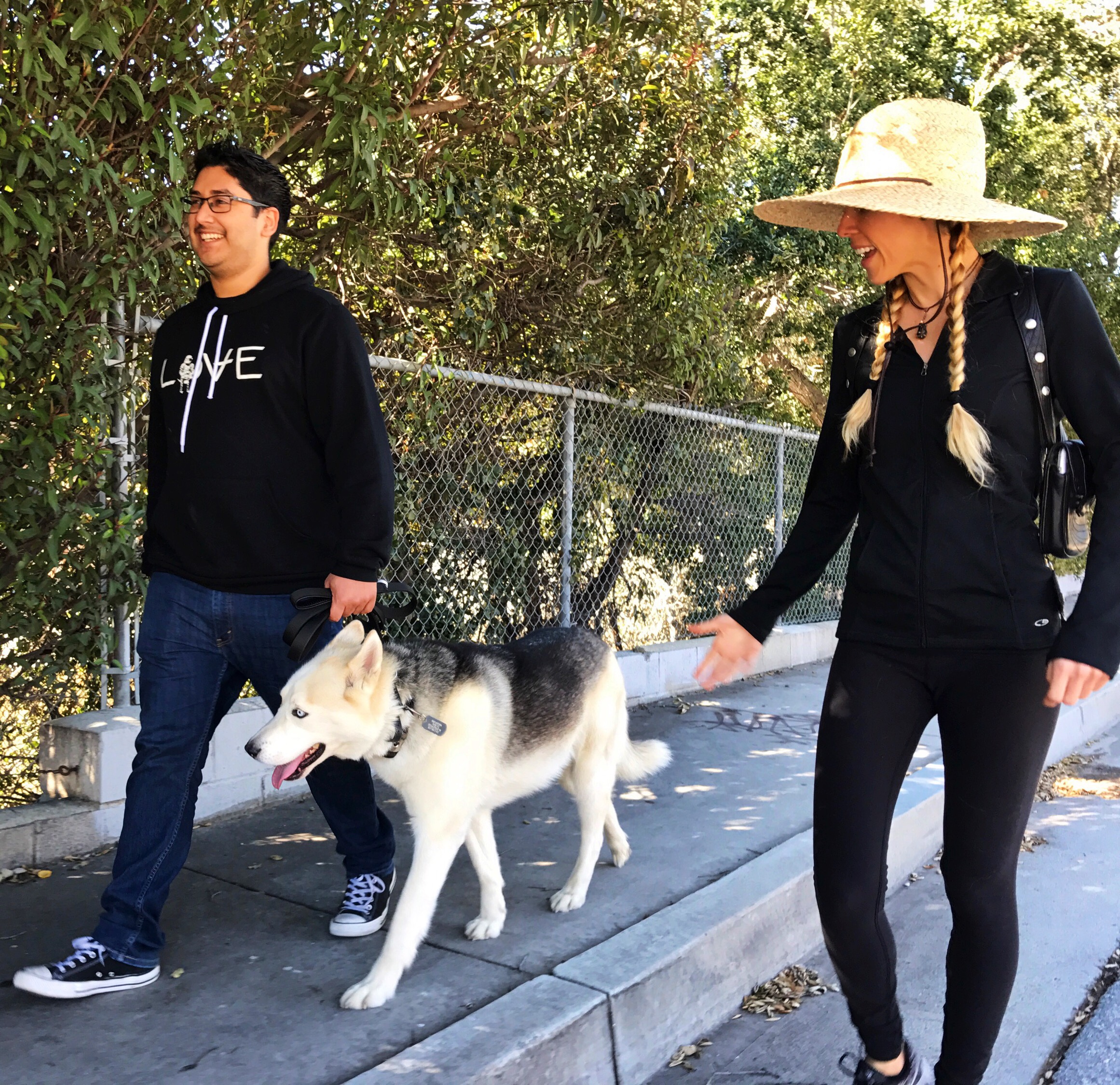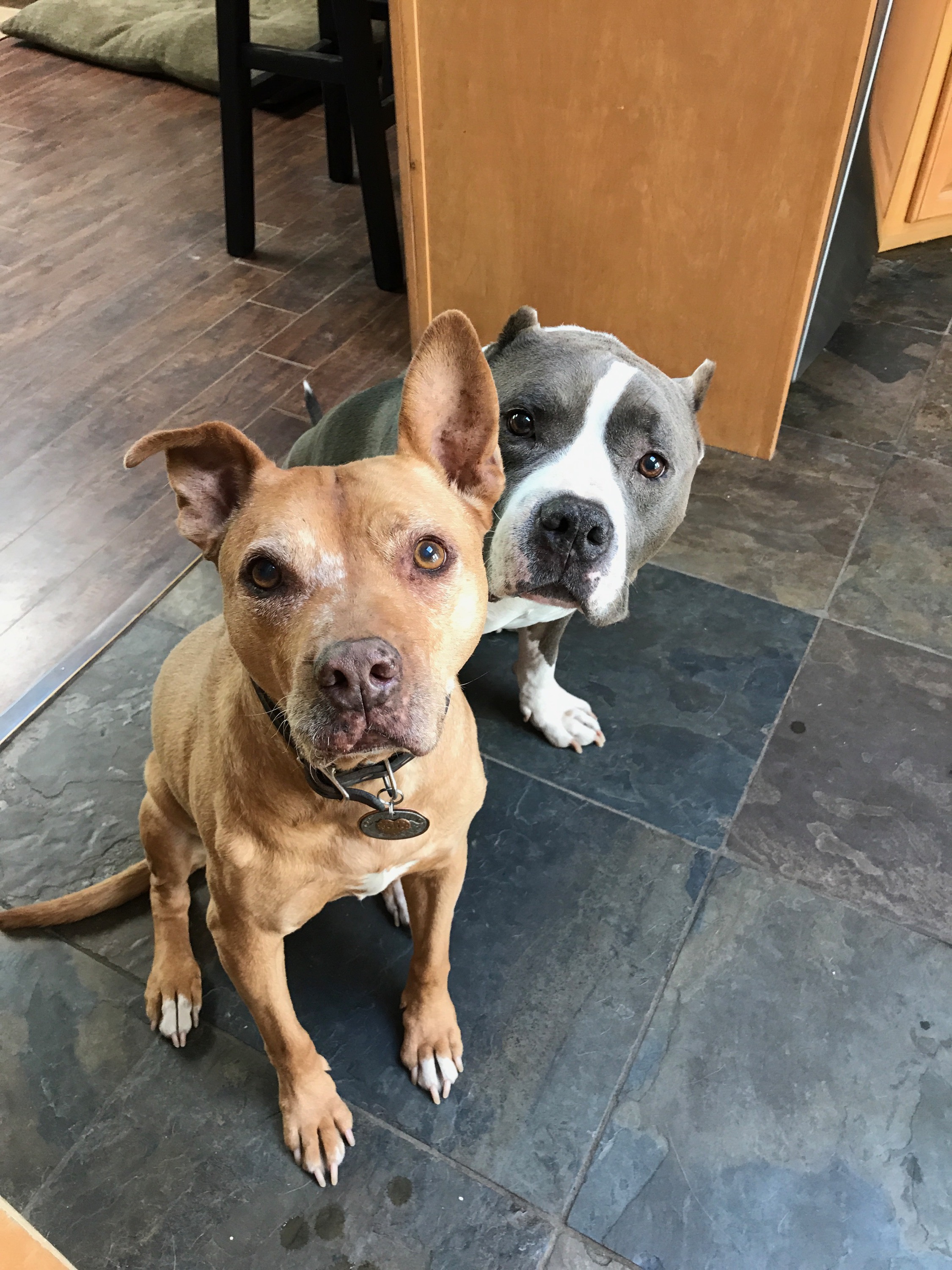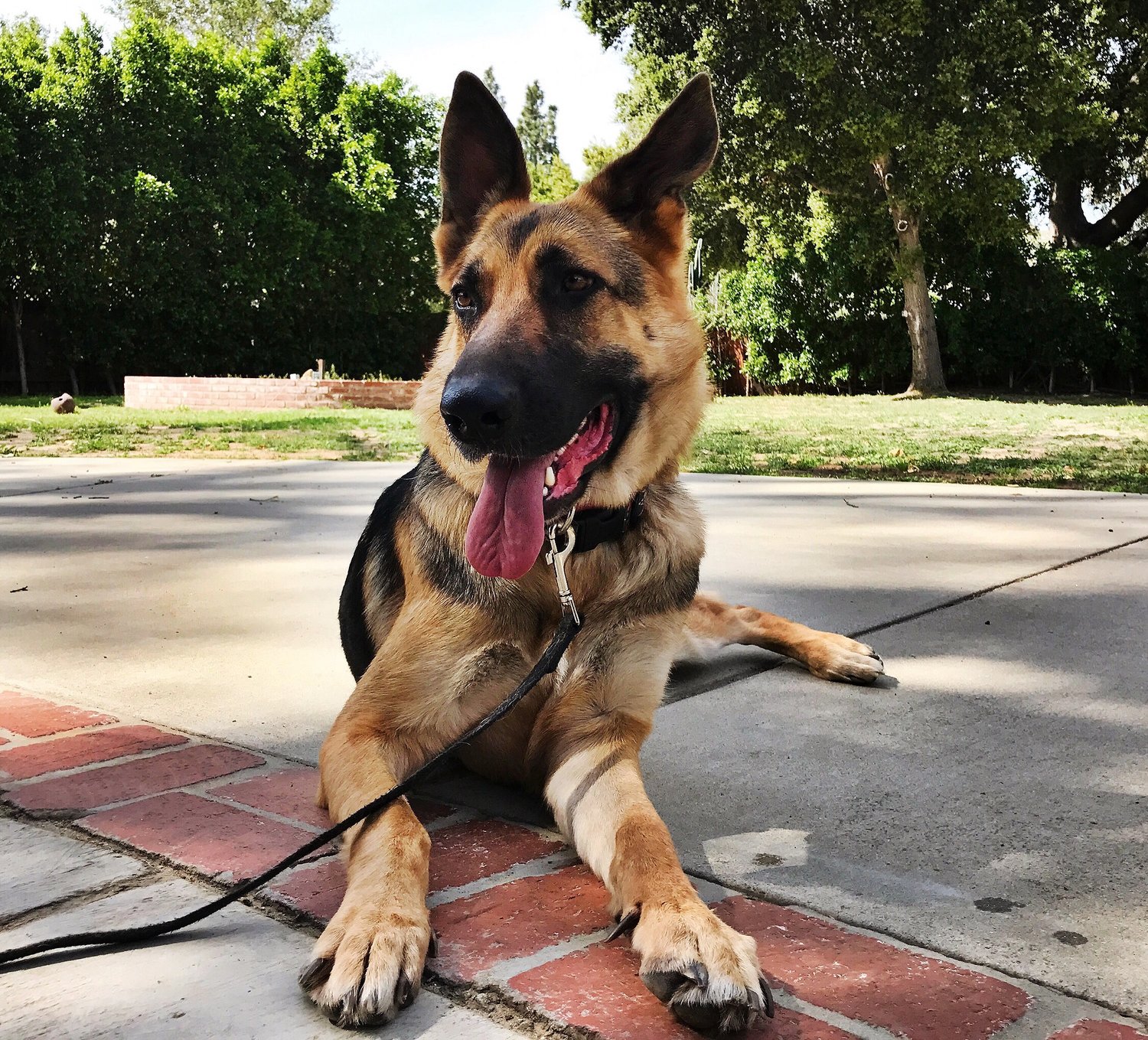 By Sean O'SheaIf you're lucky enough to be unfamiliar with the current friction in the dog training world, let me ruin that for you. :)There's an approach that goes by various names. It might be called pure positive, force free, or rewards based. The concept is simple: for dogs, life and learning should always be 100% fun, comfortable, and enjoyable. You reward the behavior you like, and ignore the behavior you dislike. No tools or approaches that might impinge on 100% fun, comfortable, and enjoyable should ever be used. Anything that makes the dog uncomfortable is labeled inhumane.It's purported to be "scientifically based", extremely modern, and highly evolved (even though it eschews 3 of the 4 learning quadrants science accepts.) It's a new and better way to learn. Consequences, and all that nasty stuff the rest of us creatures learn by, are all unnecessary. It's incredibly popular, has the best built-in marketing (who wouldn't want to just use treats and love to create good behavior?), and has a near-religious, cult-like following among its devotees.The only issue is, it doesn't really work.Let me clarify. It works really, really well to teach certain things. If you want your dog to "know" how to sit, down, place, recall, beg, roll over, shake, or do any number of behaviors or tricks, it's awesome. But there's a rub. There's a big difference between "knowing" and reliably performing something. Your dog can "know" all day long and still not do...especially when you need it most. Also, there's the little matter of it not working at all to teach what is absolutely NOT okay - dog aggression or human aggression, reactivity on leash, resource guarding, jumping, counter-surfing, poop eating, just to name a few.In other words, it's a great yes, but a terrible no.But, if you listen to the devotees, they'll tell you it does it all, with any dog. It creates absolutely reliable recalls...even around squirrels and other dogs. It creates awesome, non-pulling walks, eradicates reactivity on-leash, stops jumping, fixes human or dog aggression, and makes resource guarding a thing of the past. And all without any of those nasty tools, or having to be "mean" to your dog.So we've got all these claims of awesome results, all done in a loving, kind, aversive-free fashion. There's mountains of books, DVDs, workshops, and websites, all claiming amazing results and help for those in need. We've got trainers swearing they can do seriously amazing rehab with seriously tough dogs. We've heard legendary tales of truly nasty aggression being turned around. Heavy-duty reactivity issues totally sorted. The most challenging behaviors, and all of it better handled and better solved. And once again, all achieved without those damn tools, consequences, or leadership stuff.I mean, come on, that's amazing. That's like dog trainer rockstar stuff. That's the stuff that changes the world...or at least the industry. That's the stuff you can't wait to see in action. The stuff you can't wait to witness and cheer on.Except...When you go to find it, to cheer it on...you can't. It's not there. All that awesomeness has been misplaced, or tucked away somewhere. Maybe it's so awesome that you need to join a club or get some private access code?It's a head scratcher for sure. Where is it all? Why can't you find all this great stuff. Surely the folks who have this knowledge can't wait to capture it on video and share it with the rest of the world. Surely they want to help dog owners and other trainers see this great stuff so they can all make more evolved, more enlightened decisions. Right? If you truly loved dogs you'd want everyone to have access to this great information. Right?But alas, when you go searching, it's nowhere to be found. Not the serious stuff. Sure you can find videos of cupcake dogs, purported to be "serious" at one point, that were never really a challenge doing great. But all that heavy-duty stuff? Crickets.And that's where you have to ask some hard questions. If this approach is one devised by dog lovers, who only want the best for dogs, and if this approach is truly revolutionary, why would those with this information and ability keep it to themselves? Why would dog lovers rob other dog lovers who are struggling? Why would they keep something so helpful, for so many, a secret?And you really only have two possible answers. One, they don't care enough about dogs and owners to share what they know and how they do it. Or two, they can't do what they say.Or maybe there's a third. Maybe it's both. Maybe the only true priority is the agenda, the religion. Maybe dogs and owners aren't the priority at all. Maybe real results and real caring aren't the North Star of this religion. Maybe this religion is about something else altogether.Maybe this religion is actually more about rescuing broken people by way of rescuing dogs. The dogs, their owners, and their issues aren't the focus. They're the window dressing. They're the camouflage used to distract from the true motive of the religion: the practitioners attempting to heal or retroactively protect themselves by way of protecting dogs, from what they see as parallels of their own disempowerment, lack of boundaries, and coping with what they didn't desire in their own lives.The dogs, the owners, the truth, don't matter. All that matters is that that nagging pain within subsides.That's the religion.
By Sean O'SheaIf you're lucky enough to be unfamiliar with the current friction in the dog training world, let me ruin that for you. :)There's an approach that goes by various names. It might be called pure positive, force free, or rewards based. The concept is simple: for dogs, life and learning should always be 100% fun, comfortable, and enjoyable. You reward the behavior you like, and ignore the behavior you dislike. No tools or approaches that might impinge on 100% fun, comfortable, and enjoyable should ever be used. Anything that makes the dog uncomfortable is labeled inhumane.It's purported to be "scientifically based", extremely modern, and highly evolved (even though it eschews 3 of the 4 learning quadrants science accepts.) It's a new and better way to learn. Consequences, and all that nasty stuff the rest of us creatures learn by, are all unnecessary. It's incredibly popular, has the best built-in marketing (who wouldn't want to just use treats and love to create good behavior?), and has a near-religious, cult-like following among its devotees.The only issue is, it doesn't really work.Let me clarify. It works really, really well to teach certain things. If you want your dog to "know" how to sit, down, place, recall, beg, roll over, shake, or do any number of behaviors or tricks, it's awesome. But there's a rub. There's a big difference between "knowing" and reliably performing something. Your dog can "know" all day long and still not do...especially when you need it most. Also, there's the little matter of it not working at all to teach what is absolutely NOT okay - dog aggression or human aggression, reactivity on leash, resource guarding, jumping, counter-surfing, poop eating, just to name a few.In other words, it's a great yes, but a terrible no.But, if you listen to the devotees, they'll tell you it does it all, with any dog. It creates absolutely reliable recalls...even around squirrels and other dogs. It creates awesome, non-pulling walks, eradicates reactivity on-leash, stops jumping, fixes human or dog aggression, and makes resource guarding a thing of the past. And all without any of those nasty tools, or having to be "mean" to your dog.So we've got all these claims of awesome results, all done in a loving, kind, aversive-free fashion. There's mountains of books, DVDs, workshops, and websites, all claiming amazing results and help for those in need. We've got trainers swearing they can do seriously amazing rehab with seriously tough dogs. We've heard legendary tales of truly nasty aggression being turned around. Heavy-duty reactivity issues totally sorted. The most challenging behaviors, and all of it better handled and better solved. And once again, all achieved without those damn tools, consequences, or leadership stuff.I mean, come on, that's amazing. That's like dog trainer rockstar stuff. That's the stuff that changes the world...or at least the industry. That's the stuff you can't wait to see in action. The stuff you can't wait to witness and cheer on.Except...When you go to find it, to cheer it on...you can't. It's not there. All that awesomeness has been misplaced, or tucked away somewhere. Maybe it's so awesome that you need to join a club or get some private access code?It's a head scratcher for sure. Where is it all? Why can't you find all this great stuff. Surely the folks who have this knowledge can't wait to capture it on video and share it with the rest of the world. Surely they want to help dog owners and other trainers see this great stuff so they can all make more evolved, more enlightened decisions. Right? If you truly loved dogs you'd want everyone to have access to this great information. Right?But alas, when you go searching, it's nowhere to be found. Not the serious stuff. Sure you can find videos of cupcake dogs, purported to be "serious" at one point, that were never really a challenge doing great. But all that heavy-duty stuff? Crickets.And that's where you have to ask some hard questions. If this approach is one devised by dog lovers, who only want the best for dogs, and if this approach is truly revolutionary, why would those with this information and ability keep it to themselves? Why would dog lovers rob other dog lovers who are struggling? Why would they keep something so helpful, for so many, a secret?And you really only have two possible answers. One, they don't care enough about dogs and owners to share what they know and how they do it. Or two, they can't do what they say.Or maybe there's a third. Maybe it's both. Maybe the only true priority is the agenda, the religion. Maybe dogs and owners aren't the priority at all. Maybe real results and real caring aren't the North Star of this religion. Maybe this religion is about something else altogether.Maybe this religion is actually more about rescuing broken people by way of rescuing dogs. The dogs, their owners, and their issues aren't the focus. They're the window dressing. They're the camouflage used to distract from the true motive of the religion: the practitioners attempting to heal or retroactively protect themselves by way of protecting dogs, from what they see as parallels of their own disempowerment, lack of boundaries, and coping with what they didn't desire in their own lives.The dogs, the owners, the truth, don't matter. All that matters is that that nagging pain within subsides.That's the religion.
CONNECT WITH US ON
Facebook,
Twitter,
Instagram, and
YouTube for more training insights, tips, our free weekly Q&A Saturday, and community interaction!
Our groundbreaking, game-changing dog training book The Good Dog Way: Love Them By Leading Them is now available for order! Click HERE to order your copy!CLICK THE PICTURE BELOW TO WATCH THE BOOK TEASER!









